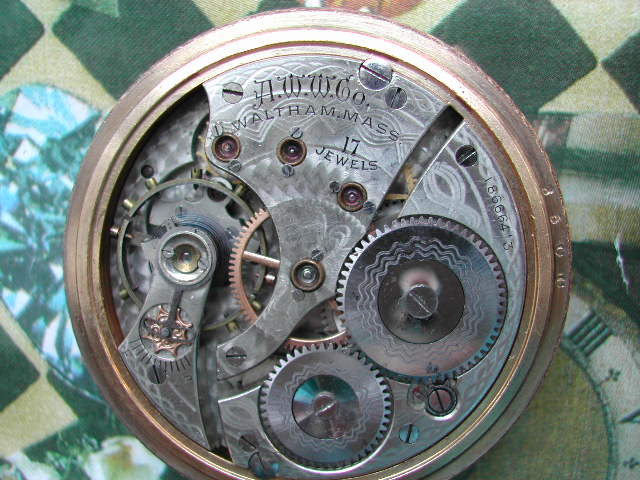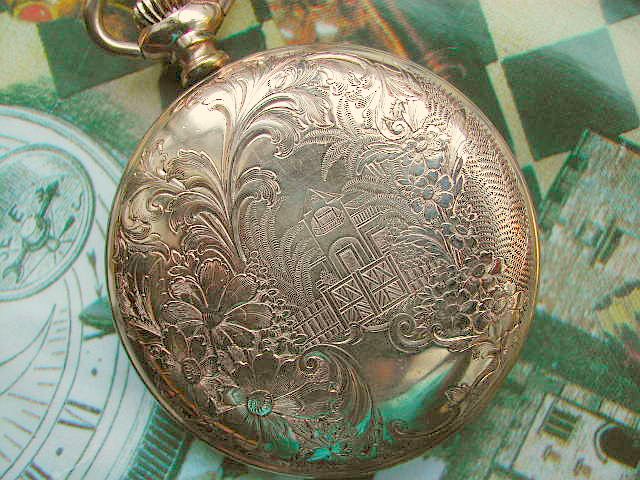
| WWT Shows | CLICK TO: Join and Support Internet Horology Club 185™ | IHC185™ Forums |

|
• Check Out Our... • • TWO Book Offer! • |
Welcome Aboard IHC185™  Internet Horology Club 185
Internet Horology Club 185  IHC185™ Discussion Site Main Page
IHC185™ Discussion Site Main Page  Technical, Shop Talk and Internet Links
Technical, Shop Talk and Internet Links  Watch Repair Questions and Answers
Watch Repair Questions and Answers  And what is this the result of?
And what is this the result of?
 Internet Horology Club 185
Internet Horology Club 185  IHC185™ Discussion Site Main Page
IHC185™ Discussion Site Main Page  Technical, Shop Talk and Internet Links
Technical, Shop Talk and Internet Links  Watch Repair Questions and Answers
Watch Repair Questions and Answers  And what is this the result of?
And what is this the result of?Go  | New Topic  | Find-Or-Search  | Notify  | Tools  | Reply to Post  |  |
Waltham, 17j, 16s, model 16-A. Stephanie O'Neil NAWCC Member 143979  | |||
|
What is this the result of? The case is in beautiful condition, finely detailed etching and the reason I purchased the watch. Take a look! Stephanie O'Neil NAWCC Member 143979  | ||||
|
For those of you interested in viewing the movement, here's a peek! Stephanie O'Neil NAWCC Member 143979  | ||||
|
What is the green substance, your thoughts on why this occurred, and, what can I use to clean sub second dial area without removing the dial? Stephanie O'Neil NAWCC Member 143979 | ||||
|
I think the green substance is copper sulfate coming form the back of the dial as a result of the soldering of the seconds subdial, hopefully it has not migrated through the enamel finish. As how to clean it without taking the dial from the movement, try with Rodico first (the green putty used to pick up dirt and fingerprints form dials and movements). If not, a very light wash with a wet Q-tip with a dab of soap could do it. You have to be careful with the second hand. I retouched the pic of the case of your watch to enhance the color, hope you like it.  | ||||
|
Your best bet is to remove the dial and use mild dish soap like dawn and a soft toothbrush to get into the edges. Rinse then either let air dry or use a hair dryer. Reinstall, put the hands back on and you should be good to go. Be careful of trying to fix while on the watch. You don't want moisture or grit to get into the movement. Barry B | ||||
|
Steph, I believe this is a model 1899 or 1908 rather than A 16-A. A little isopropyl alcohol used sparingly with a sharpened toothpick and/or Q-tip and tissue sometimes works well short of removing the dial. Just dampen the tissue with alcohol and use the toothpick over the tissue to get into the crevice area. Kenny | ||||
|
| IHC Life Member RR Watch Expert |
Stephanie, Kenny is correct, your Waltham is a Model 1908, Grade No. 625, made about 1913. The Model 16A was introduced much later, near the close of WWII. If you take a toothpick, cut the tip off at an angle, and run the point gently against the junction of the seconds bit and the outer dial, it may remove almost all of the copper sulphate without having to use any liquid at all. It is not as good a job as removing the dial and washing it in dishwashing detergent with a toothbrush, but it should make the dial look a lot better. Ed Ueberall NAWCC 49688 IHC Member 34 The Escapement | |||
|
Contrarian view: I like it as is! Tech question: would there be any harm in doing nothing? Stu | ||||
|
| IHC Life Member RR Watch Expert |
Stu, I'm not sure that 'doing nothing' might not cause some harm. The formation of copper sulphate may indicate that something acidic has gotten into the dial, causing the corrosion. If the dial was mine, I would remove it, clean it with a mild dishwashing soap and then dunk it in a sodium bicarbonate solution to neutralize any remaining acidity to help prevent further corrosion. Then rinse in lukewarm water and dry with a 'glass cloth'. BTW, a 'glass cloth' isn't made from glass, it is a lint-free towel made for drying glass or porcelain without leaving any streaks or lint. They work great on glass crystals as well as dials, and are available from any restaurant supply house. Ed Ueberall NAWCC 49688 IHC Member 34 The Escapement | |||
|
Stephane, I think the case is really nice. Is that what is refered to as a hand carved case? Frank Frank Juchniewicz | ||||
|
| Powered by Social Strata |
| Your request is being processed... |
|
©2002-2025 Internet Horology Club 185™ - Lindell V. Riddle President - All Rights Reserved Worldwide

